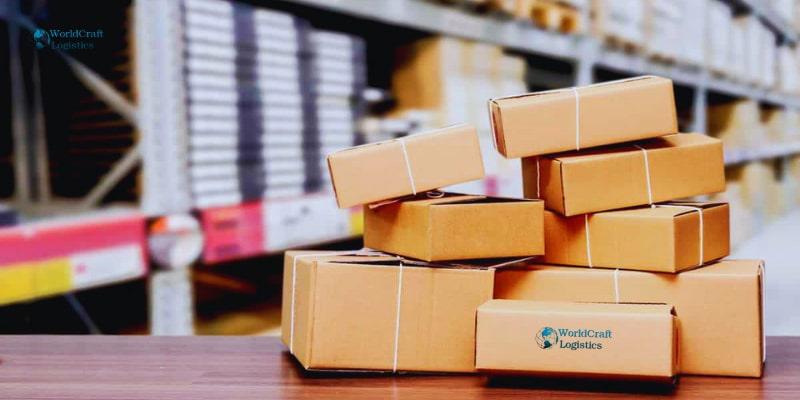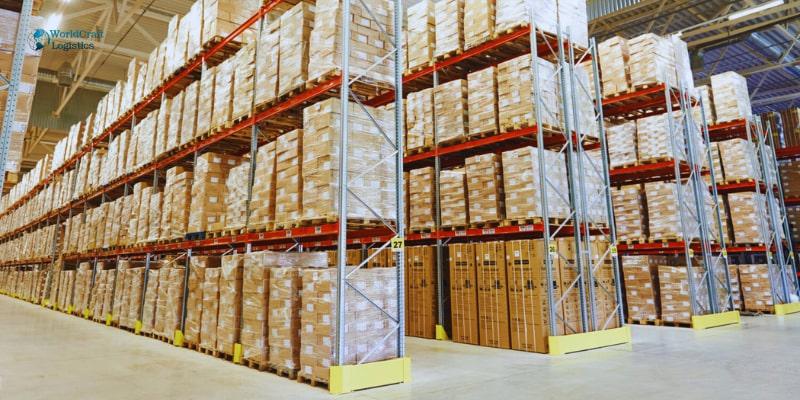
Starting June 1st, 2023 Our warehouse fee will be $0.65/cubic foot per month
In effort to lower the warehouse storage fee during inflation, we have went narrow aisle racking.This construction took us four months but the project is finally completed. With narrow aisle racking, we are able to drop storage by 24%.We as partners will go through this inflation together.
11/21/2023

A shop provides a product for sale using the consignment inventory supply chain model, but the supplier keeps ownership of the item until a client makes a purchase. The store has the option to return merchandise that customers decide not to buy because it does not truly purchase the inventory until the products are sold. Seasonal things, like holiday decorations, and perishable goods, like fruit, are popular consignment model offerings.
For instance, a provider of outdoor Christmas lights may agree to a wholesale agreement with a big-box retailer to sell its goods from October through December. The store would only pay for the lights that customers bought during that time; it wouldn't pay for the lights in full. Any unsold lights would be returned to the supplier by the store in January.
Other term should be need for you:
- Unlocking B2B Fulfillment Excellence: Strategies and Solutions for Customers
- What is Cross-Docking? Benefits, effective service for businesses

When used properly, consignment inventory may be advantageous for both retailers and suppliers, offering a number of benefits to each.
For suppliers and vendors, consignment inventory has several advantages. They consist of:
Inventory consignment offers clients several advantages. These consist of:

Suppliers and retailers may not always find consignment warehouse to be the best option. Here are a few drawbacks associated with this supply chain approach.
From the perspective of the seller or supplier, consignment stock has a number of drawbacks. They consist of:
According to customers, consignment stock has the following drawbacks:

Consignment inventory usually involves the provider of the products, known as the consigner, approaching a retailer, known as the consignee, and together they negotiate the conditions of the contract. This agreement will specify the price of the items, establish delivery costs, and provide details on how returns will be handled. The contract may also specify which party will be in charge of lost or damaged goods, provide criteria for deposits or commissions, and describe how the inventory will be managed.
The supplier will send the inventory to the store after both parties have agreed to the terms of the agreement. Only when a sale is made by the retailer does the supplier receive payment. The price a shop sets for an item determines how much profit they make. The store may return any unsold merchandise to the supplier without incurring any fees if it doesn't sell out of its entire inventory.

A legal document that describes the understanding between a consignee and consignor about consignment items is known as a consignment stock contract or consignment agreement. The conditions for consignment inventory storage, transfer, and sale are specified in this contract. It also include the sum of money that each party makes when the products are sold.

Although it could seem a little more difficult than other inventory techniques, consignment inventory accounting isn't. Consignment sales are the responsibility of both the store and the supplier; inventory is not. Continue reading if you want to understand how to manage consignment accounts.
Consignment goods are listed in the supplier's (consignor's), not the retailer's (consignee's), inventory. The retailer never acquires ownership of the items, even though they are sold by them and are located on or close to their properties. The retailer simply keeps track of consignment goods at the point of sale. This is shown in the retailer's balance sheet. The sale's income and the supplier payment are added at this stage.
A supplier's tracking of consignment inventory is a crucial duty. We've made this simpler for you by producing a consignment inventory worksheet that is free for use. You are welcome to copy it and start tracking every item you have as it passes through the consignment procedure.
Consignment patterns indicate a rise in usage. If a business doesn't have the proper procedures in place, managing consignment inventory can be a challenging task. Retailers and suppliers should collaborate to create a solid connection and mutually accepted contract. They should also diversify their sales channels, use the appropriate technology for their inventory needs, and place a high priority on close communication. The following are best practices for consignment inventory management.

Create a strong contract. A good consignment inventory arrangement is built on the contract. The parameters of the agreement, including who is responsible for shipping and returns, when payments are due, and who is in charge of lost or damaged goods, should be understood by both the retailer and the supplier. A retail inventory management contract, for instance, should contain information on how the inventory will be counted and handled, as well as any deposit or commission requirements and a statement of good faith attempts to sell the merchandise quickly.
Establish a solid rapport with your significant other. It's essential to establish a mutually beneficial partnership with your company partner. Retailers should work hard to promote the supplier's product, and suppliers should strive to make sure the product is as successful as possible. The deeper the relationship and the higher the sales, the more both sides work to place the right product in front of the right buyers.
Employ appropriate technologies. Conventional inventory software might not be sufficient. To track items and invoices, consignment inventory requires specific tracking systems. To minimize data conflicts between the supplier and retailer, organizations should look for systems that offer data analytics and excellent insight into the inventory for both sides.
Look for several avenues for sales. It's vital to look for multiple consignment inventory partners because not all relationships end in marriage. Giving suppliers and retailers alike more business options helps to reduce risk on both sides.
Talk to each other. Throughout the partnership, communication between the store and the supplier is essential. In order to demonstrate their dedication to the agreement and their business relationship, the parties should seek a solution that works for both of them if problems emerge.

Dropshipping is the most widely used type of online consignment. Businesses can sell products that aren't in their inventory with this concept. In this instance, the consignee sends the goods straight to the purchaser. Online marketplaces like eBay and Amazon, as well as online auctions, are further forms of consignment in the eCommerce industry. On these websites, millions of individuals look for a wide range of products every day. There, you are able to market your products.
Consignment and resale stores differ mostly in how they acquire merchandise. Resale shops buy lightly used goods and pay sellers cash up front for their gently worn shoes, clothing, and accessories. Instead of accepting cash, the establishment may occasionally instead accept store credit.
Consignment shops try to sell items on your behalf in the meantime. You'll get a portion of the sale price when your items are successfully sold by a consignment retailer. If the item doesn't sell, the consignor may pick it up and keep it, depending on the circumstances set forth by the retailer. On behalf of the consignor, many clothes consignment franchisees also make arrangements for unsold items to be donated.

According to the experience of Worldcraft Logistics (a professional transportation unit in the US), consignment items are tracked using a particular accounting procedure. The consignor records the sale of their items as a credit to sales and a debit to cash.
In a consignment, the consignor consents to give the consignee ownership of the property in exchange for the consignee agreeing to sell it on the consignor's behalf. Because they are no longer in the possession of the consignee or consignor, the sold goods count as an expense and cause their cash account to increase.
Contrary to thrift shops in definition of consignment inventory, which are typically run as nonprofit organizations, consignment stores are typically for-profit businesses. To support your neighborhood, you can give or sell your unwanted clothing to a thrift store or consignment shop.
Employees sort contributions from thrift stores before bringing them to the floor for sale. You can discover a variety of products in thrift stores, from brand-new to antiques from your grandmother's house. Thrift stores take most donations as is.
Consignment stores do not take donations. Consignment stores reimburse you for your products after they are sold. A portion of the item's total sale price will be given to you. Consider bringing a shirt into a consignment shop. Usually, the retailer gives between 30% and 50% of the total cost. Consequently, the owner and the store both make money from the sale of the goods.
Consignment stores typically have buyers on staff who examine previously owned goods to see whether they will sell. Hence, compared to thrift stores, which usually only place a value on an item if it is in good enough shape to sell, consignment shops are more picky.
Typically, consignment stores only resell things they believe will be of interest to their intended market. Because of this, goods from consignment businesses are frequently of higher quality than those from thrift stores. But there are tons of advantages to thrifting as opposed to consignment store purchasing!
SEO
Digital Marketing/SEO Specialist
Simon Mang is an SEO and Digital Marketing expert at Wordcraft Logistics. With many years of experience in the field of digital marketing, he has shaped and built strategies to effectively promote Wordcraft Logistics' online presence. With a deep understanding of the logistics industry, I have shared more than 500 specialized articles on many different topics.

Education
01/05/2025

Education
02/18/2025

Education
01/01/2024

Education
08/28/2024

Education
11/13/2023